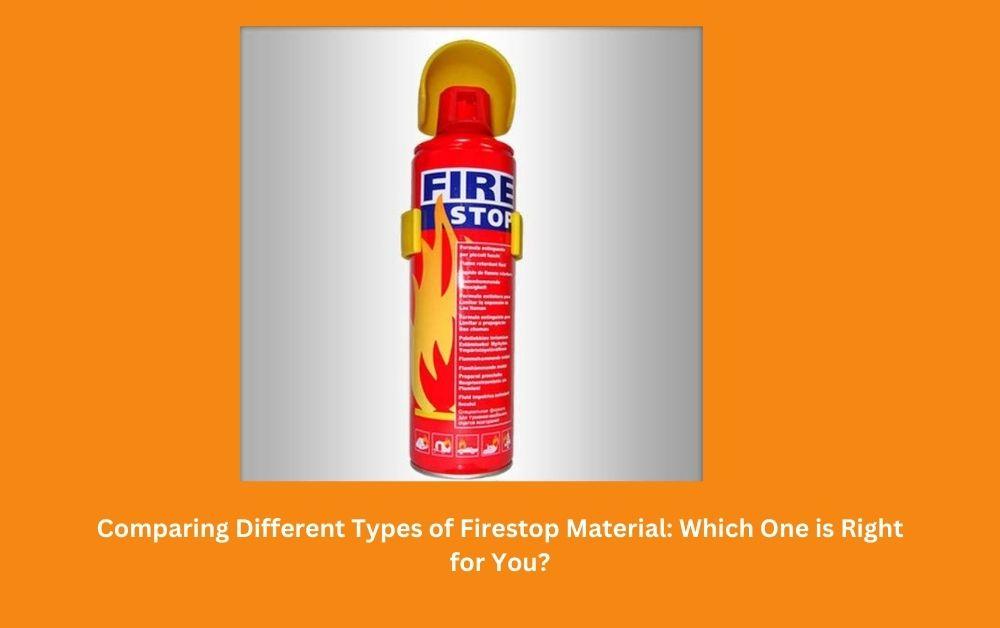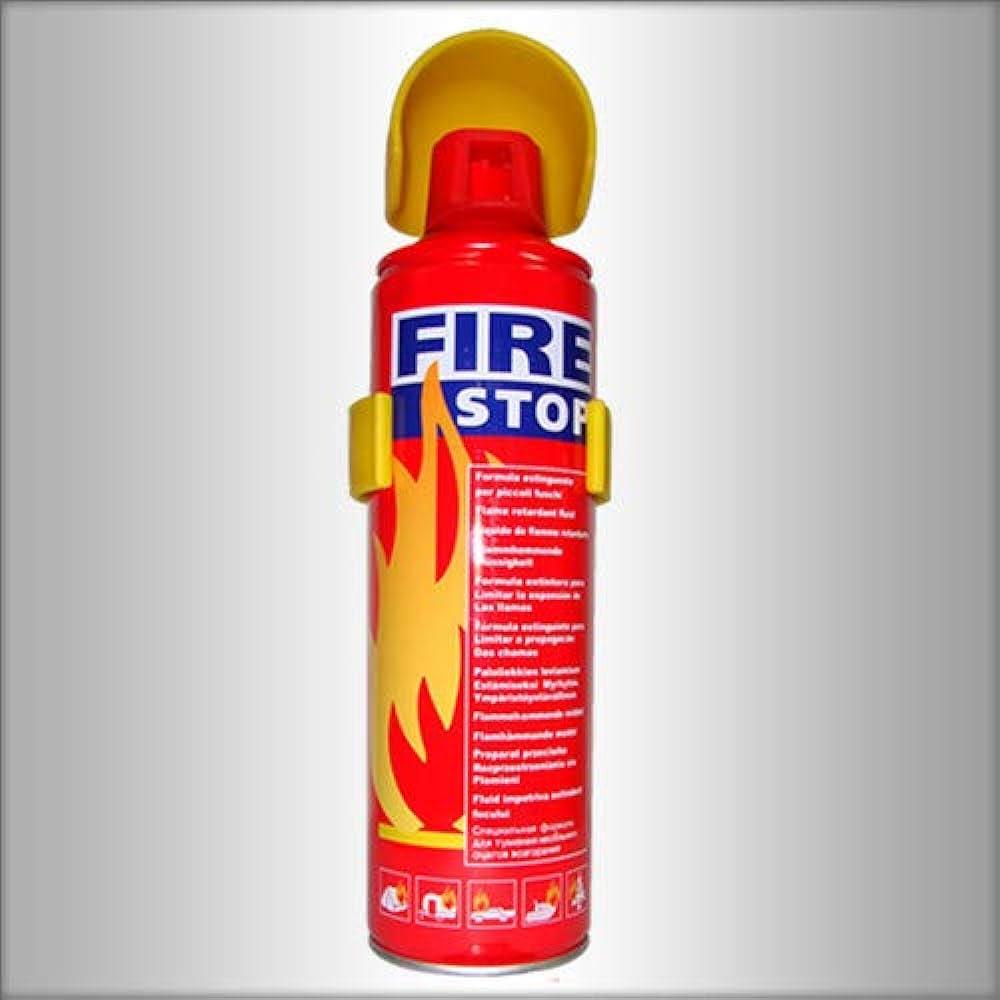Comparing Different Types of Firestop Material: Which One is Right for You?

Introduction
Fire safety is a crucial aspect of modern building design, whether for residential, commercial, or industrial projects. Ensuring that a structure can withstand potential fire hazards requires careful planning and the right selection of protective materials. One of the most essential elements in preventing the spread of fire within a building is the proper use of specialized materials designed to contain flames and smoke.
In the ever-expanding world of construction and engineering, firestop material has become a cornerstone of building safety. Selecting the right type is not just about compliance with regulations—it’s about protecting lives, assets, and the long-term integrity of the structure. Understanding the available options, their benefits, and their best applications is critical for architects, engineers, and facility managers.
Understanding Firestop Material
What is Firestop Material?
Firestop materials are specialized components installed in openings, joints, and penetrations in walls, floors, and ceilings to prevent the spread of fire and smoke. These materials can expand, seal, or resist flames, helping to compartmentalize buildings and maintain structural safety during a fire incident.
Importance in Building Safety
The primary purpose of firestop material is to slow down or stop the spread of fire. By creating barriers in areas where mechanical, electrical, or plumbing systems penetrate walls, ceilings, or floors, these materials limit damage and provide occupants with more time to evacuate safely. In many regions, their use is mandated by building codes and fire regulations.

Types of Firestop Material
1. Firestop Sealants
Firestop sealants are caulks or intumescent materials applied to small gaps, cracks, or openings around pipes, cables, or conduits.
-
Advantages:
-
Easy to apply and flexible.
-
Expands when exposed to heat, sealing gaps effectively.
-
Ideal for irregular-shaped penetrations.
-
-
Best Uses:
-
Around electrical conduits and small piping systems.
-
Filling gaps in fire-rated walls or floors.
-
2. Firestop Collars
Firestop collars are pre-formed rings that encase plastic pipes, expanding to seal the opening during a fire.
-
Advantages:
-
Quick installation.
-
Specifically designed for PVC and other plastic pipes.
-
Reliable performance in high-risk areas.
-
-
Best Uses:
-
Residential and commercial plumbing systems.
-
Fire-rated wall penetrations with plastic piping.
-
NOTE : Protect your property with trusted firestop material from Oman Ocean Trading LLC. Ideal for walls, ceilings, and penetrations, our materials prevent fire spread and provide peace of mind. Contact us today and ensure your building meets the highest safety standards.
3. Firestop Putty
Firestop putty is a moldable material used to fill gaps around electrical boxes, small openings, and conduits.
-
Advantages:
-
Easy to shape and reapply.
-
Provides effective smoke and fire sealing.
-
No curing time required for most types.
-
-
Best Uses:
-
Electrical installations.
-
Temporary or adjustable firestop solutions.
-
4. Firestop Boards and Blankets
Firestop boards and blankets are rigid or flexible panels made from mineral fibers or other fire-resistant materials.
-
Advantages:
-
High fire resistance for longer durations.
-
Can cover large openings and complex penetrations.
-
Durable and reusable in certain cases.
-
-
Best Uses:
-
Large penetrations in walls or floors.
-
Areas requiring higher fire ratings or extended protection.
-
5. Intumescent Wraps and Strips
Intumescent wraps and strips expand when exposed to heat, sealing around pipes, ducts, and cables.
-
Advantages:
-
Space-efficient and lightweight.
-
Can accommodate irregular shapes and movement.
-
Maintains seal even under thermal stress.
-
-
Best Uses:
-
HVAC systems.
-
Plastic or metal pipe penetrations in fire-rated structures.
-
Factors to Consider When Choosing Firestop Material
Fire Rating Requirements
Each firestop material has a rated duration for which it can resist fire (e.g., 1 hour, 2 hours). Selecting a material that meets the required fire rating of the building or specific compartment is essential to ensure compliance and safety.
Type of Penetration
The size, shape, and type of penetration (pipe, cable, conduit) play a major role in selecting the appropriate firestop solution. Small gaps may only require sealants or putty, while larger openings may need boards or collars.
Environment and Exposure
Consider the environment where the material will be installed. High humidity, temperature fluctuations, or potential exposure to chemicals may require firestop materials with specific resistance properties.
Installation and Maintenance
Ease of installation, durability, and future maintenance are important. Some materials, like putty or sealants, can be easily replaced or adjusted, while boards and collars may require more effort but provide longer-term protection.
Benefits of Using Firestop Material Properly
Enhanced Safety
The primary benefit is obvious: slowing down or containing fire reduces the risk to building occupants and first responders. Properly installed firestop systems create compartmentalized zones, limiting fire spread and smoke infiltration.
Compliance with Codes
Building codes and fire regulations often mandate the use of certified firestop materials. Compliance avoids penalties, ensures insurance coverage, and demonstrates a commitment to safety.
Protection of Assets
Industrial equipment, sensitive data centers, and residential properties all benefit from the strategic use of firestop material. Containing fire can minimize damage and reduce costly repairs.
Longevity and Reliability
Modern firestop materials are designed for long-term performance, maintaining their integrity under normal environmental conditions for decades, ensuring continued protection throughout the life of the building.
Also Read : الدليل الكامل لشراء السيارات في المزادات بدبي دون التعرض للاحتيال
Installation Best Practices
Proper Surface Preparation
Ensure surfaces are clean, dry, and free from debris. Proper surface preparation improves adhesion and effectiveness.
Follow Manufacturer Guidelines
Different materials have specific installation requirements. Following manufacturer instructions guarantees optimal performance and compliance with certification standards.
Regular Inspections
Firestop systems should be inspected periodically for signs of wear, damage, or tampering. Regular maintenance ensures the materials remain effective in an emergency.
Professional Installation
Whenever possible, use certified contractors or trained personnel to install firestop materials. Professional installation ensures compliance, performance, and safety.
Conclusion
Choosing the right firestop solution is a crucial decision for any building or industrial project. From firestop material sealants and collars to boards, blankets, and intumescent wraps, each option offers unique benefits depending on penetration size, environment, and required fire rating.
By understanding the types of firestop materials and their applications, building managers, engineers, and contractors can ensure maximum safety, compliance, and structural integrity. Proper installation, maintenance, and selection based on project needs are key to protecting lives and assets from potential fire hazards.
Investing in the right firestop system today can save significant costs and prevent devastating consequences in the future, making it an essential part of modern construction and industrial safety strategies.
- Art
- Causes
- Crafts
- Dance
- Drinks
- Film
- Fitness
- Food
- Games
- Gardening
- Health
- Home
- Literature
- Music
- Networking
- Other
- Party
- Religion
- Shopping
- Sports
- Theater
- Wellness


